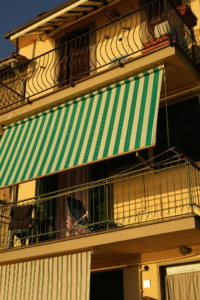Navigating Supply Chain Disruptions: Strategies for Cable Harness Suppliers
Cable harness assembly processes face distinct vulnerabilities that many other manufacturing operations don't encounter.

Supply chain disruptions have become a persistent challenge rather than an occasional hurdle for businesses worldwide. For those in the cable harness assembly industry, these challenges have been particularly acute. Complex components, global sourcing requirements, and increasingly demanding customer expectations have created a perfect storm of supply chain complexity. As a cable harness supplier in today’s volatile market, maintaining operational continuity while meeting customer demands requires strategic thinking and adaptable systems.
The ripple effects of recent global events have forced manufacturers to reconsider their entire approach to supply chain management. What was once predictable has become uncertain, and what was once reliable now requires contingency planning. This new normal demands fresh strategies and innovative thinking from those who wish to thrive rather than merely survive.
Understanding the Unique Vulnerabilities of Cable Harness Production
Cable harness assembly processes face distinct vulnerabilities that many other manufacturing operations don’t encounter. The intricate nature of wire harness assembly means that a single missing component can halt production entirely. Unlike some products that can be partially assembled and completed later, cable harnesses often require all components to be available simultaneously.
Custom wire harness manufacturers must navigate the additional challenge of product diversity. With potentially hundreds of different specifications across their customer base, maintaining appropriate inventory levels becomes exponentially more complex. Each design might require unique connectors, terminals, or specialized wiring that can’t be substituted without customer approval.
Early Warning Systems: Detecting Supply Chain Issues Before They Escalate
Forward-thinking cable harness suppliers implement robust early warning systems to identify potential disruptions before they impact production. This includes monitoring news from supplier regions, tracking logistics delays, and maintaining open communication channels with key vendors.
Digital dashboards that track component lead times and flag unusual patterns can give procurement teams precious time to develop alternatives. Some electronic contract manufacturers have begun implementing AI-powered monitoring tools that can predict disruptions based on historical patterns and current market conditions.
Inventory Management Strategies for the Modern Era
Traditional just-in-time inventory approaches have proven insufficient in today’s unpredictable environment. Progressive wire harness assembly operations are adopting hybrid models that balance efficiency with security. Critical components with long lead times or limited sourcing options may warrant higher safety stock levels, while more readily available items can follow leaner inventory protocols.
Strategic buffer stocks, particularly for custom wire harness production, can provide a cushion against short-term disruptions without excessively tying up capital. The key is identifying which components truly represent supply chain vulnerabilities and adjusting inventory policies accordingly.
Supplier Diversification: Beyond the Obvious
While geographical diversification has become standard practice, truly resilient cable harness suppliers look beyond simply adding suppliers in different regions. They examine the entire upstream supply chain to identify hidden concentration risks. For instance, multiple suppliers might source raw materials from the same original producer, creating an invisible single point of failure.
Effective diversification also means developing relationships with suppliers of varying sizes and specialties. While large suppliers offer stability and scale, smaller specialized vendors often provide flexibility and innovation that can prove invaluable during disruptions.
Alternative Materials and Components: Flexibility in Design
Design flexibility has emerged as a powerful tool in the supply chain resilience toolkit. Forward-thinking cable harness assembly teams work closely with engineering to identify alternative materials and components that can be substituted without compromising performance.
Creating “disruption-ready” designs with pre-approved alternative components can dramatically reduce reaction time when supply issues arise. Some electronic contract manufacturers have begun maintaining libraries of alternative designs that can be rapidly deployed when primary components become unavailable.
Digital Transformation in Supply Chain Management
Digital tools have revolutionized supply chain visibility and responsiveness. Cloud-based platforms that integrate with supplier systems can provide real-time insights into component availability and production status. For cable harness suppliers, these tools can sync customer forecasts with production capacity and material availability to identify potential bottlenecks before they occur.
Advanced planning systems that incorporate machine learning can help optimize production scheduling in the face of material constraints, maximizing output despite supply limitations. These digital capabilities represent a significant competitive advantage for manufacturers willing to invest in them.
Building Supply Chain Resilience Through Collaboration
Collaborative approaches to supply chain management have proven particularly effective. Rather than maintaining arm’s-length relationships with suppliers and customers, leading wire harness assembly companies are building integrated partnerships that share both risks and rewards.
Some custom wire harness manufacturers have established formal supply chain councils that bring together key suppliers to discuss challenges, share forecasts, and coordinate responses to disruptions. These collaborative frameworks create trust and alignment that proves invaluable when challenges arise.
Financial Strategies for Weathering Supply Chain Volatility
Supply chain disruptions inevitably create financial pressures. Forward-thinking cable harness assembly operations maintain financial flexibility through appropriate working capital management, diversified funding sources, and strategic use of supply chain financing.
Some cable harness suppliers have negotiated flexible payment terms with both customers and suppliers that can be activated during disruption events. Others have established dedicated contingency funds to cover the additional costs associated with emergency sourcing or expedited freight.
Case Studies: Success Stories in Supply Chain Crisis Management
One midsize electronic contract manufacturer serving the automotive sector demonstrated remarkable resilience during recent component shortages. By implementing a tiered risk assessment system for all bill of materials items and maintaining close relationships with tier-two suppliers, they maintained 98% on-time delivery despite widespread industry disruptions.
Another cable harness supplier transformed a potentially devastating material shortage into a competitive advantage by rapidly qualifying alternative components and offering customers the choice between waiting for original materials or accepting the substitute. This transparent approach not only preserved relationships but actually strengthened them.
Regulatory Considerations and Compliance Challenges
Regulatory requirements add another layer of complexity to supply chain disruptions. Cable harness suppliers serving industries with stringent certification requirements face particularly challenging constraints when seeking alternative sources or materials.
Successful organizations maintain comprehensive compliance documentation for all components and establish clear protocols for qualifying and certifying alternatives. Building relationships with certifying bodies and understanding expedited approval pathways can significantly reduce the time required to implement changes.
Looking Ahead: Future-Proofing Your Cable Harness Supply Chain
Long-term resilience requires looking beyond immediate challenges to build truly adaptive supply chain capabilities. Wire harness assembly operations should evaluate their entire business model through the lens of flexibility and resilience.
Some forward-thinking custom wire harness manufacturers are exploring distributed production models with smaller, more agile facilities located closer to key customers. Others are investing in advanced manufacturing technologies that reduce dependency on specialized labor and increase production flexibility.
Turning Disruption into Competitive Advantage
Supply chain disruptions, while challenging, present opportunities for differentiation. Cable harness suppliers who can maintain reliable delivery despite market turbulence will strengthen customer relationships and capture market share from less adaptable competitors.
The organizations that will thrive in this new reality are those that view supply chain resilience not as a cost center but as a strategic capability. By thoughtfully implementing the strategies outlined above, wire harness assembly companies can transform supply chain management from a vulnerability into a source of competitive advantage.
Ready to build a more resilient supply chain for your cable harness needs? At Star Engineering, we’ve implemented these proven strategies to ensure consistent, on-time delivery even during industry-wide disruptions. Our team of experts can help you navigate supply chain challenges with our flexible cable harness assembly solutions and proactive approach to component sourcing.
Contact Star Engineering today to learn how our robust supply chain management can provide your business with the reliability and peace of mind you deserve in these uncertain times.



